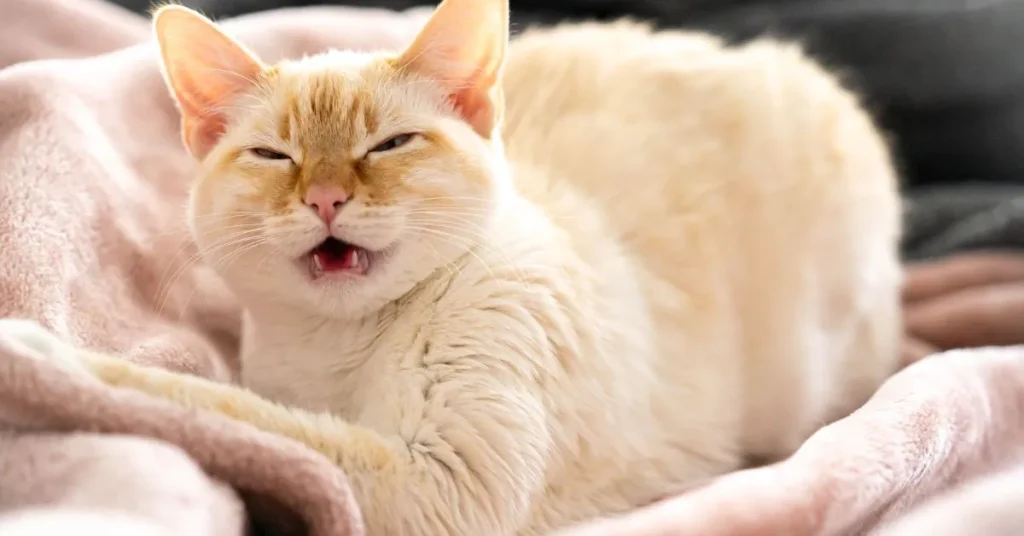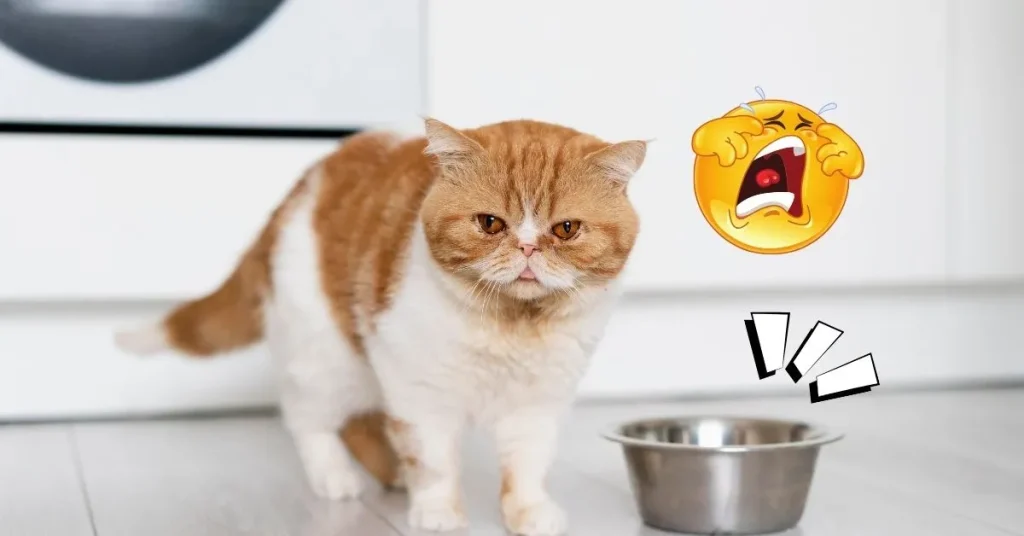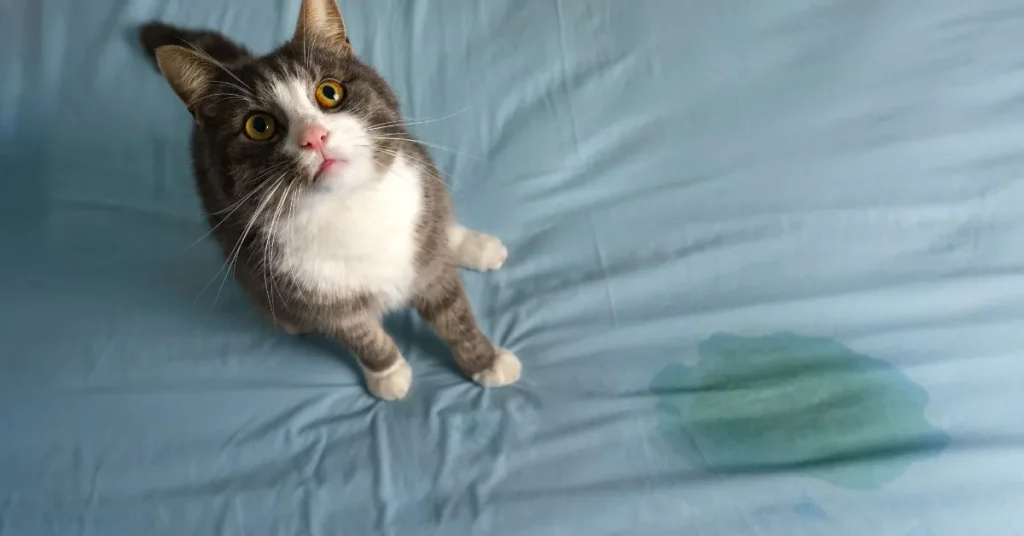If you’ve taken note of your textured companion sniffling more than normal, you might be pondering, “why is my cat sneezing?” Cat sneezing can be a common event, but determined or visit wheezing seems to show a basic well-being issue. Understanding the reasons behind your cat’s wheezing fits is basic for guaranteeing their well-being and giving suitable care.
The Life Systems of a Cat’s Respiratory System
Before digging into the causes of cat sniffling, it’s supportive to get the complexities of a cat’s respiratory framework. Like people, cats depend on their respiratory framework to breathe, permitting oxygen to enter their bodies while ousting carbon dioxide. Be that as it may, cats have special highlights that separate their respiratory life systems from other animals.
A cat’s nose contains specialized structures, counting turbines and mucous films, which offer assistance channels and humidify the discuss they breathe. Furthermore, cats have an exceedingly created sense of scent, depending on their sharp olfactory capacities to explore their environment and identify potential dangers or prey.
Common Causes of Cat Sneezing
Upper Respiratory Contamination (URLs): One of the most visit reasons for cat wheezing is upper respiratory contamination. URLs are regularly caused by infections or microscopic organisms, such as cat herpes virus or Cali-civiruse, which can lead to indications like wheezing, nasal release, and congestion.
Allergies: Cats can create sensitivities to different natural triggers, such as dust, cleaning, shape, and certain nourishment’s. Unfavorably susceptible responses can show as wheezing, tingling, watery eyes, and skin irritation.
Foreign Objects: Cats are curious animals and may breathe in or ingest remote objects, such as tidy, grass, or little particles, which can chafe their nasal entries and trigger sneezing.
Nasal Aggravations: Presentation to solid odors, cigarette smoke, or chemical vapor can aggravate a cat’s delicate nose, driving to wheezing bouts.
Dental Issues: Dental issues, such as tooth rot or gum malady, can cause distress or torment, driving to sniffling or nasal discharge.
Polyps or Tumors: In a few cases, developments such as polyps or tumors may create in a cat’s nasal entries, hindering wind current and causing sniffling and other respiratory symptoms.
Environmental Push: Unpleasant circumstances, such as moving to an unused domestic, the presentation of an unused pet, or schedule changes, can trigger sniffling in cats.
Temperature Changes: Sudden changes in temperature or mugginess levels can chafe a cat’s respiratory framework, driving it to wheezing fits.
Diseases: Fundamental restorative conditions, such as asthma or pneumonia, can cause respiratory side effects, including sniffling, hacking, and trouble breathing.
Genetics: A few breeds of cats may be inclined to certain respiratory issues due to hereditary factors.
When to Look for Veterinary Care
While periodic wheezing is typical for cats, diligent or serious sniffling warrants veterinary consideration. If your cat is encountering any of the taking after indications along with sniffling, it’s fundamental to counsel a veterinarian promptly:
- Nasal release: Particularly if it is thick, discolored, or bloody.
- Difficulty breathing: Wheezing, hacking, or open-mouth breathing.
- Loss of craving: Refusal to eat or drink.
- Lethargy: Diminished action levels or expanded sleeping.
- Fever: Hoisted body temperature.
- Facial swelling: Especially around the nose or eyes.
- Sneezing blood: A concerning sign that requires quick veterinary care.
Diagnostic Methods for Cat Sneezing
To decide the fundamental cause of your cat’s sniffling, your veterinarian may suggest the taking after symptomatic tests:
Physical Examination: A careful examination of your cat’s nose, mouth, and throat to evaluate for any abnormalities.
Nasal Swab: Collection of nasal emissions for research facility investigation to distinguish irresistible agents.
Blood Tests: Assessment of blood tests to survey for signs of contamination, aggravation, or systemic disease.
Imaging Ponders: X-rays or ultrasound checks may be utilized to visualize the nasal sections and distinguish any auxiliary anomalies or masses.
Allergy Testing: Skin or blood tests may be performed to recognize potential allergens activating your cat’s symptoms.
Treatment Alternatives for Cat Sneezing
The suitable treatment for cat sniffling depends on the basic cause. Treatment choices may include:
Antibiotics: If a bacterial disease is shown, anti-microbial may be endorsed to target the basic cause.
Antiviral Drugs: For viral contamination such as cat herpes virus, antiviral drugs may offer assistance lighten indications and decrease viral shedding.
Anti-inflammatory Drugs: corticosteroids or non steroidal anti-inflammatory drugs (NSA-IDs) may be endorsed to decrease irritation and diminish nasal congestion.
Antihistamines: If sensitivities are suspected, antihistamines may be suggested to ease symptoms.
Nasal Decongestants: Medicines such as saline nasal drops or showers may offer assistance to calm nasal blockage and encourage breathing.
Surgery: In cases of nasal polyps, tumors, or dental issues, surgical intercession may be vital to evacuate the obstacle and reestablish typical airflow.
Preventing Cat Sneezing
While a few causes of cat wheezing are unavoidable, there are steps you can take to minimize the risk:
Maintain a Clean Environment: Routinely clean your domestic to decrease clean, shape, and other potential irritants.
Provide Satisfactory Nourishment: Bolster your cat with an adjusted count of calories to bolster its resistant framework and general health.
Limit Presentation to Allergens: Distinguish and minimize introduction to common allergens, such as dust, tidiness, and certain foods.
Ensure Dental Well being: Plan customary dental check-ups for your cat to avoid dental issues that can contribute to sneezing.
Reduce Push: Make a calm, steady environment for your cat and minimize introduction to upsetting circumstances at whatever point possible.
Conclusion
In conclusion, cat wheezing can be caused any an assortment of variables, extending from generous aggravations to genuine fundamental well-being conditions. Whereas periodic sniffling is ordinary, determined, or extreme sniffling warrants veterinary consideration to recognize and address the basic cause.
By understanding the potential causes of cat wheezing and recognizing the signs of respiratory trouble, pet proprietors can take proactive measures to guarantee their textured companions stay solid and upbeat. Keep in mind, when in question, continuously counsel your veterinarian for direction and treatment choices custom-fitted to your cat’s particular needs.



